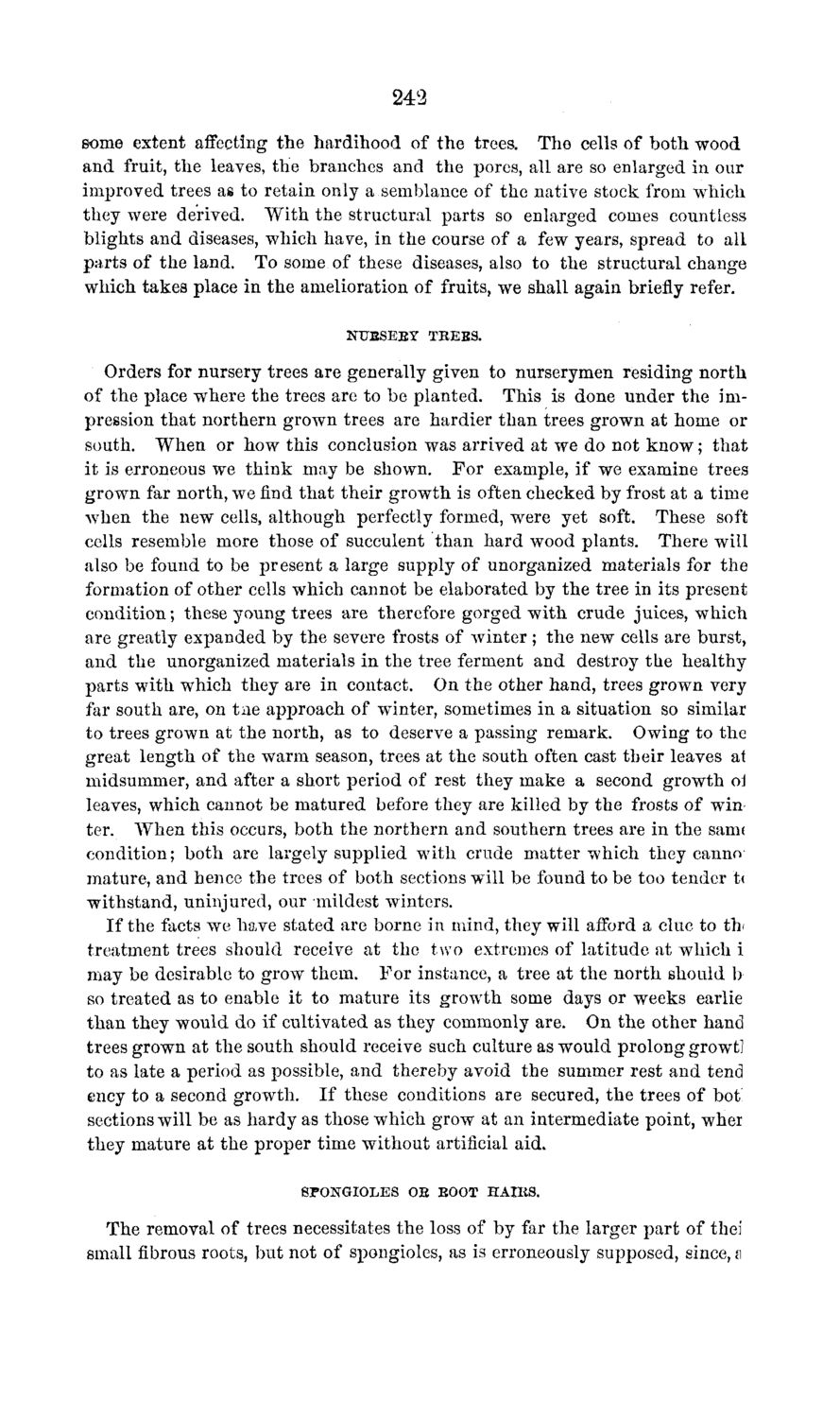| |
| |
Caption: Board of Trustees Minutes - 1869
This is a reduced-resolution page image for fast online browsing.

EXTRACTED TEXT FROM PAGE:
242 some extent affecting the hardihood of the trees. The cells of both wood and fruit, the leaves, the branches and the pores, all are so enlarged in our improved trees as to retain only a semblance of the native stock from which they were derived. W i t h the structural parts so enlarged comes countless blights and diseases, which have, in the course of a few years, spread to all parts of the land. To some of these diseases, also to the structural change which takes place in the amelioration of fruits, we shall again briefly refer. NUBSEEY TREES. Orders for nursery trees are generally given to nurserymen residing north of the place where the trees are to be planted. This is done under the impression that northern grown trees are hardier than trees grown at home or south. When or how this conclusion was arrived at we do not k n o w ; t h a t it is erroneous we think may be shown. F o r example, if we examine trees grown far north, we find that their growth is often checked by frost at a time when the new cells, although perfectly formed, were yet soft. These soft cells resemble more those of succulent than hard wood plants. There will also be found to be present a large supply of unorganized materials for the formation of other cells which cannot be elaborated by the tree in its present condition; these young trees are therefore gorged with crude juices, which are greatly expanded by the severe frosts of w i n t e r ; the new cells are burst, and the unorganized materials in the tree ferment and destroy the healthy parts with which they are in contact. On the other hand, trees grown very far south are, on tne approach of winter, sometimes in a situation so similar to trees grown at the north, as to deserve a passing remark. Owing to the great length of the warm season, trees at the south often cast their leaves at midsummer, and after a short period of rest they make a second growth oi leaves, which cannot be matured before they are killed by the frosts of win ter. When this occurs, both the northern and southern trees are in the sani( condition; both are largely supplied with crude matter which they canno mature, and hence the trees of both sections will be found to be too tender t< withstand, uninjured, our mildest winters. If the facts we have stated are borne in mind, they will afford a clue to th< treatment trees should receive at the two extremes of latitude at which i may be desirable to grow them. F o r instance, a tree at the north should b so treated as to enable it to mature its growth some days or weeks earlie than they would do if cultivated as they commonly are. On the other hand trees grown at the south should receive such culture as would prolong growt] to as late a period as possible, and thereby avoid the summer rest and tend ency to a second growth. If these conditions are secured, the trees of bot' sections will be as hardy as those which grow at an intermediate point, wher they mature at the proper time without artificial aid. 6FONGIOLES OB BOOT HAIRS. The removal of trees necessitates the loss of by far the larger part of thei small fibrous roots, but not of spongioles, as is erroneously supposed, since, a
| |